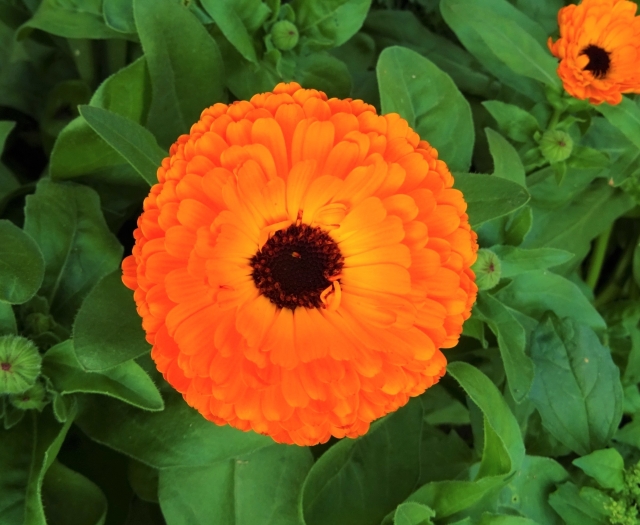Pot Marigold
(Calendula officinalis)
Pot Marigold (Calendula officinalis)
/
/

Eatcha
CC BY-SA 4.0

























































Estimated Native Range
Summary
Pot Marigold is valued for its ease of cultivation and its medicinal properties, as the flowers have been traditionally used in herbal remedies and skin treatments. It is also edible, with the petals adding a splash of color to salads and dishes. The plant is often grown in vegetable gardens to attract beneficial insects and as a companion plant. It prefers full sun but can tolerate part shade and requires moderate watering. Well-drained soil is ideal, but it can grow in a range of soil types. While it is generally pest-resistant, it can occasionally suffer from fungal diseases such as powdery mildew. Due to its prolific self-seeding, it can become invasive outside its native range, so gardeners should manage its spread responsibly.CC BY-SA 4.0
Plant Description
- Plant Type: Herb
- Height: 1-2 feet
- Width: 1-2 feet
- Growth Rate: Moderate
- Flower Color: Yellow, Orange
- Flowering Season: Spring, Summer, Fall
- Leaf Retention:
Growth Requirements
- Sun: Full Sun, Part Shade
- Water: Medium
- Drainage: Slow, Medium, Fast
Common Uses
Bee Garden, Bird Garden, Border Plant, Butterfly Garden, Deer Resistant, Edible*Disclaimer: Easyscape's listed plant edibility is for informational use. Always verify the safety and proper identification of any plant before consumption., Fragrant, Groundcover, Hummingbird Garden, Potted Plant, Rabbit Resistant, Salt Tolerant, Showy Flowers, Street Planting
Natural Habitat
Originally from the Mediterranean region, including meadows and fields
Other Names
Common Names: Common Marigold, Ruddles, Mary’s Gold, Calendula, Garden-Marigold, Ruddles, Marigold, Scotch-Marigold, Scottish-Marigold, Pot-Marigold
Scientific Names: , Calendula officinalis, Calendula sinuata, Calendula officinalis var. parviflora, Calendula ranunculodes, Calendula officinalis subsp. prolifera, Calendula officinalis var. prolifera, Calendula eriocarpa, Calendula officinalis f. pleniflora, Calendula officinalis subsp. officinalis
GBIF Accepted Name: Calendula officinalis L.